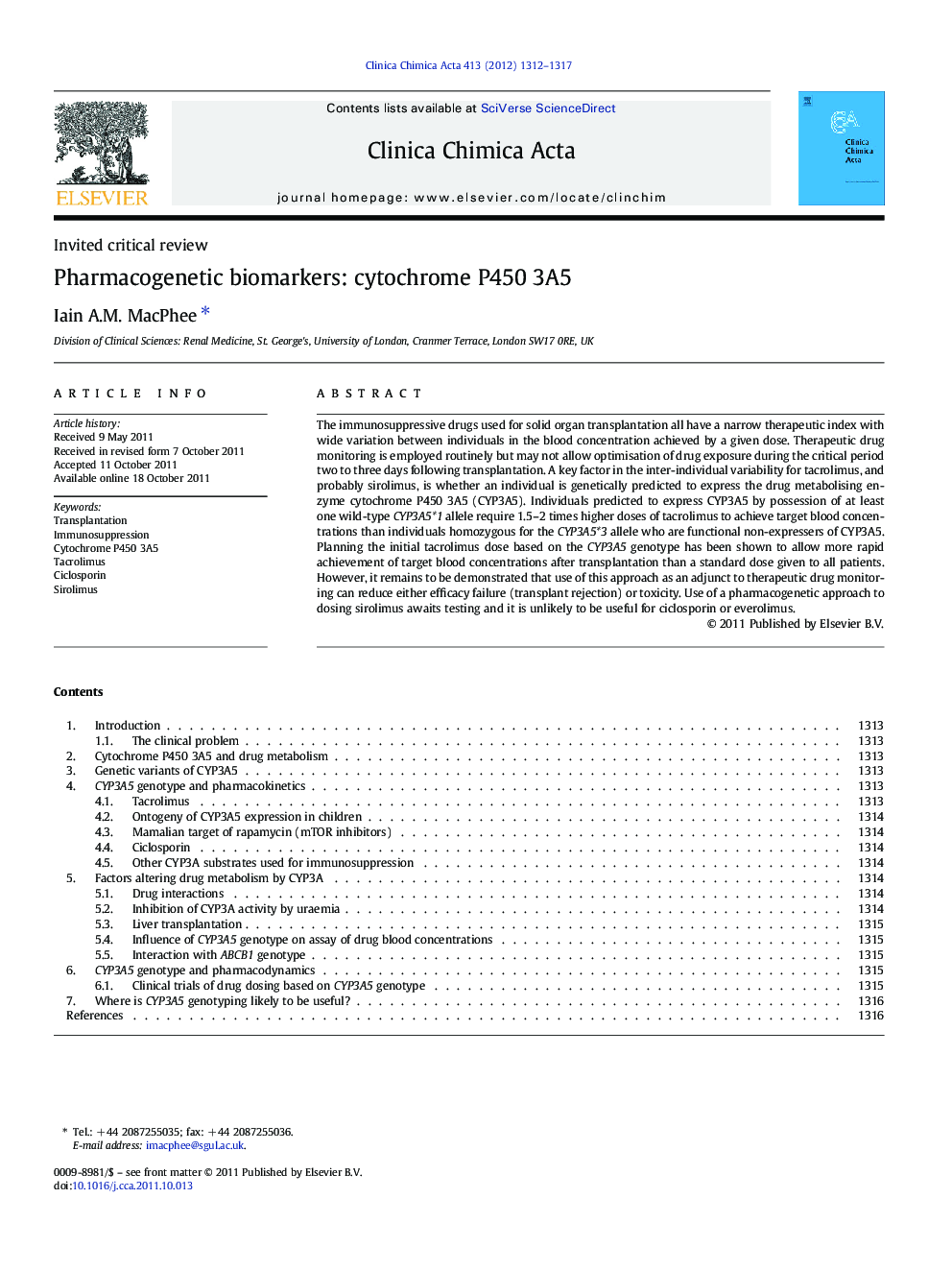| Article ID | Journal | Published Year | Pages | File Type |
|---|---|---|---|---|
| 1965900 | Clinica Chimica Acta | 2012 | 6 Pages |
The immunosuppressive drugs used for solid organ transplantation all have a narrow therapeutic index with wide variation between individuals in the blood concentration achieved by a given dose. Therapeutic drug monitoring is employed routinely but may not allow optimisation of drug exposure during the critical period two to three days following transplantation. A key factor in the inter-individual variability for tacrolimus, and probably sirolimus, is whether an individual is genetically predicted to express the drug metabolising enzyme cytochrome P450 3A5 (CYP3A5). Individuals predicted to express CYP3A5 by possession of at least one wild-type CYP3A5*1 allele require 1.5–2 times higher doses of tacrolimus to achieve target blood concentrations than individuals homozygous for the CYP3A5*3 allele who are functional non-expressers of CYP3A5. Planning the initial tacrolimus dose based on the CYP3A5 genotype has been shown to allow more rapid achievement of target blood concentrations after transplantation than a standard dose given to all patients. However, it remains to be demonstrated that use of this approach as an adjunct to therapeutic drug monitoring can reduce either efficacy failure (transplant rejection) or toxicity. Use of a pharmacogenetic approach to dosing sirolimus awaits testing and it is unlikely to be useful for ciclosporin or everolimus.
